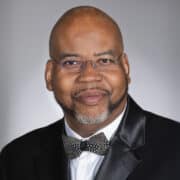Headquartered in Falls Church, Virginia, just outside of Washington, DC, Inova Health System is a nonprofit system with five hospitals, 1,700 licensed beds, and 16,000 employees serving over two million people per year in the DC-metro area. Angie Mannino, senior vice president of human resources, sits down with Profile to talk about what it takes to keep the health system well and healthy.
In HR terms, is there much of a difference between nonprofit and for-profit health care?
Mannino: There is not a great difference, other than the fact that you answer to someone else: shareholders versus community. But the health-care aspect of HR is huge, because we look under every single stone to help find ways to increase our productivity as well as our profit. This means looking at everything: staffing ratios, compensation—pay for performance versus pass-through merit increases—and even the people we hire. We’re also looking at automation, and trying to simplify all HR functions: profile and personnel changes, how you get your paycheck, and centralizing HR as a service center. This is to bring efficiencies to the organization so they’re not spending so much time on HR activity.
Are changes like automation, staffing, and compensation the result of legislative changes to health care, or just congruent?
Mannino: The trigger point for these changes is the new legislation. We’ve had to look at all functions at Inova—what they deliver to the organization, what adds value, what doesn’t, what can be delivered more efficiently. For example, we have reduced our registered nurse (RN) staffing ratios in our hospitals. We realized that a big body of work can be done by someone who doesn’t need to be an RN, such as biometrics. Now we have clinical technicians that take care of these tasks. The new legislation has given us a sense of urgency to make changes that we probably should have made long ago. That’s good for our patients and it is good for health care.
 “Working on the business is really important. I also think that learning each function of the organization and shadowing people, finding out what their vision and objectives are, is extremely helpful.”—Angie Mannino
“Working on the business is really important. I also think that learning each function of the organization and shadowing people, finding out what their vision and objectives are, is extremely helpful.”—Angie ManninoIt seems that staffing changes like this are good for a lot of reasons.
Mannino: They are. Again, with RNs, they’re now allowed to practice at the top of their license. They get to do the things that they’re actually trained and educated to do, which in turn makes them happier. But the other benefit—for both Inova and the economy—is that, when we created our clinical tech position, we decided that we would train them. The clinical tech position requires no health-care experience [from interested applicants]. It’s a good entry point. We didn’t have anything like this in the past. There are many entry-level jobs that can lead to a bigger career.
Before Inova, you worked for 15 years in sales. How does this background inform what you do as an HR professional?
Mannino: I look at everything through a completely different lens than a traditional HR person. I tend to look at the impact on the business decisions that HR makes, and think of it from the person sitting in the seat that needs to act on what HR is telling them to do. Let’s help people do their jobs. When you work in the business world, you realize that things are gray, and there can be no set rules for anything. I take a completely different approach, even with our implementation of policies and procedures. They are a lot more individualized than they were before. People are individuals, and there is never one size that fits everyone. HR prefers to have a black and white policy, and give yes or no answers, with no exceptions, but now we’re managing the gray a lot better.
Did you face any difficulty when you first started to bring HR in this direction?
Mannino: I had to cultivate this on the HR side. On the business side, there was a lot of receptivity. What was happening at Inova was that the operating units were making up their own rules. There were inconsistencies in regards to how policy was being interpreted, so they were bypassing HR and doing their own thing. It was hard at first for the HR folks to see that this kind of practice wasn’t necessarily a problem. If one unit wanted a flexible schedule, and another wanted a rigid schedule, we had to determine what was driving the policies before we tried to make everything uniform.














